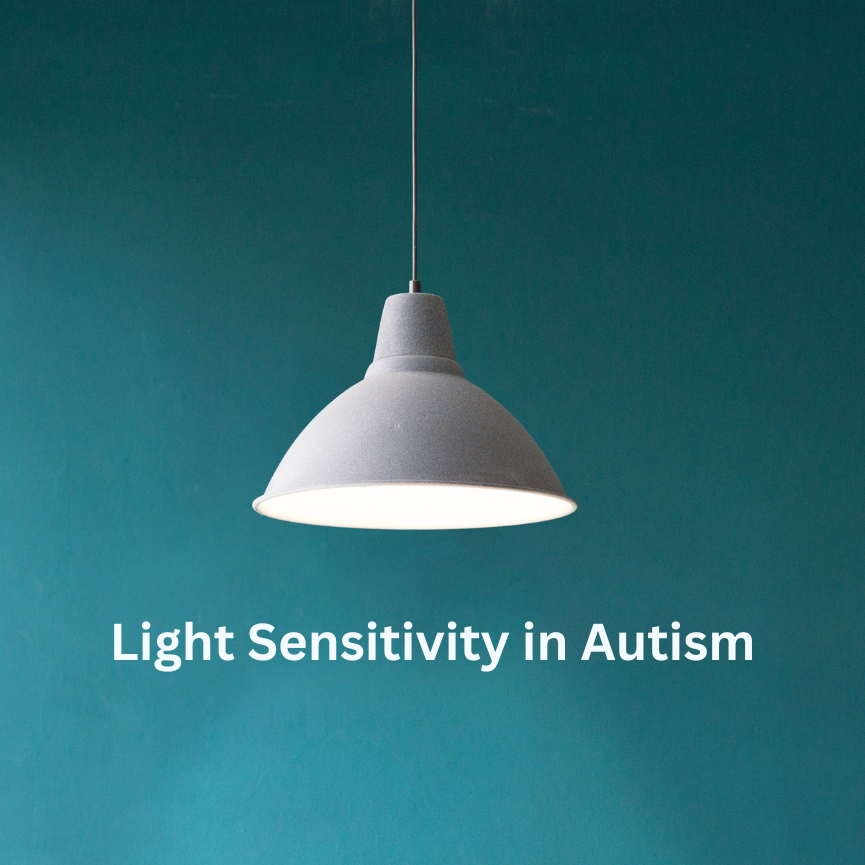
- May 21, 2024
- 140 Views
- 0 Comments
Managing Light Sensitivity In Autism
Harsh lights irritating your child? Does your child react unfavourably to certain lights or seem worried or anxious in the presence of certain light stimuli? Do you want to know what sensory lights could have a calming effect on your child? God’s Own Child brings you some solutions through research and expert opinions. Read on to find out what you can do.
Lighting has a significant role to play in making us perceive our surroundings. An Autistic child is either hypersensitive or hyposensitive to an external stimulus that leads them to behave in a certain manner.
The way a child responds to his surroundings and his processing of the visual inputs has direct implications on their behaviour. It is important to make them feel safe, be it indoors or outdoors.
Impact of light stimulus on Autistic children
Not all Autistic children behave similarly when it comes to responding to light, sound and smell.
Some children might be confused or anxious, whereas others might be absolutely unaffected and need additional sensory inputs to respond or react well.
Though there is no concrete study that may suggest the magnitude of impact lighting might have on an autistic child, in some extreme cases, it is noticed that kids might be hypersensitive to lights or develop photophobia, especially in the advanced stage of Autism.
Here are a few steps to make sure your Autistic child has better visual experiences for easy processing.
Light sensitivity indicators
- Various physical symptoms are direct indicators of light sensitivity issues.
- Check if your child is uncomfortable or anxious under bright or fluorescent lights.
- Check if they are closing, shielding, or squinting their eyes to avoid light.
- Check if they are irritated when the light flickers or makes a buzzing noise.
- Check if they are developing photophobia because of the flashing of camera lights.
- It is important to identify and address these issues immediately as in the long run; some may hinder your child’s growth and attention span and negatively impact their education or social behaviour.
Choose the lighting at your home carefully
- Choose the colour wisely. Your autistic child might not react well to lighting with artificial hues. It is suggested to keep the colour as close to natural lighting as possible. Neutral or natural colours have a soothing effect on their mental wellbeing and they end up responding well.
- Avoid lights that flicker: Fluorescent lights flicker and come in artificial colours. This might not be noticeable by most but autistic children are extremely sensitive to the flickering of light and might not respond well.
- Avoid lighting that makes noise: Florescent lightings make noises that are to be avoided as some autistic kids are sensitive to the sound.
- Dimmable lights are the key: Use dimmable lights at home to keep the brightness under control as your autistic child might not respond well, get confused, or anxious if the brightness is too high.
- Do away with shiny things: Bright sunlight, lights emitting from your computer screen, or your shiny flooring might be problematic for your autistic child to process and are advised to avoid.
- Windows with tinted glasses are a good solution to block bright sunlight, whereas to minimize the impact of fluorescent lights, it is advisable to make your child wear sunglasses.
Colours directly impact behaviour
- Bright colours like red or yellow might be too loud and overwhelming for your autistic child to process. The way your Autistic child reacts to bright colours is different from how common people react to lighting. Bright colours are extremely uncomfortable for an autistic child
- Monochromatic colours are good and do not disturb your child’s sensory system. Any wall hangings or paintings made in monochromatic colours are advisable for your home if you are thinking of decorating it.
Avoid fluorescent or any bright colour while painting your wardrobe, cupboard, or wall cabinets.
Importance of sensory lighting in addressing autism
Natural or neutral lights have a positive impact on your child’s mental health and wellbeing. It is not only the colour but the design; where is it attached or located? How many bulbs are there in one room? Everything has to be considered while shopping for your own house.
You may like to take mental note of the lightings used in your child’s classroom or the fixtures used to support them, etc, to understand what works and what do not.
Also, other elements to look at would be the floor finish, glasses used for windows, colour of the furniture, and doors to take clues while considering sensory lighting for your house. You want to make your child feel most comfortable and safe in his house by ensuring proper lighting.
While shopping, most people emphasize the aesthetic look and not the visual impact it might have on children with Autism.
Light sensitivity is a common phenomenon among autistic children and is needed to be dealt with seriously.



Comments - 0 comments till now